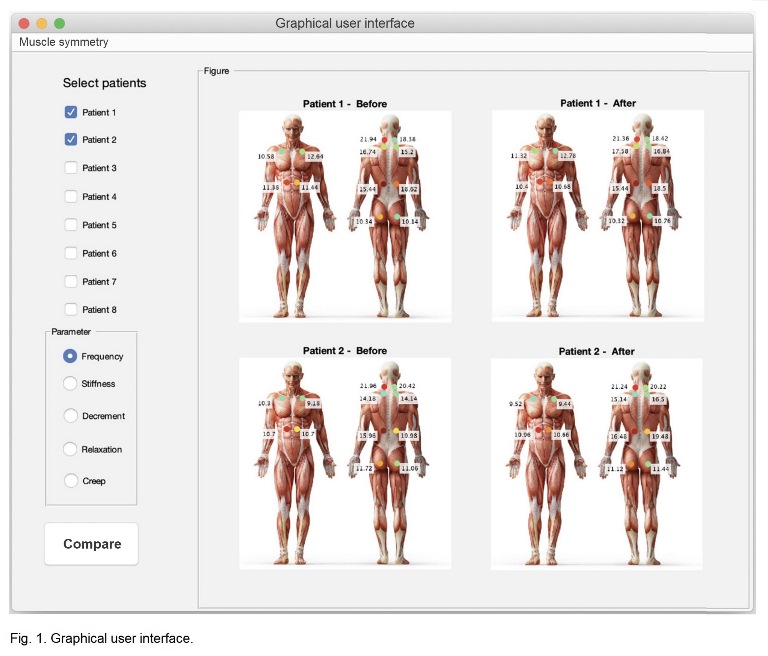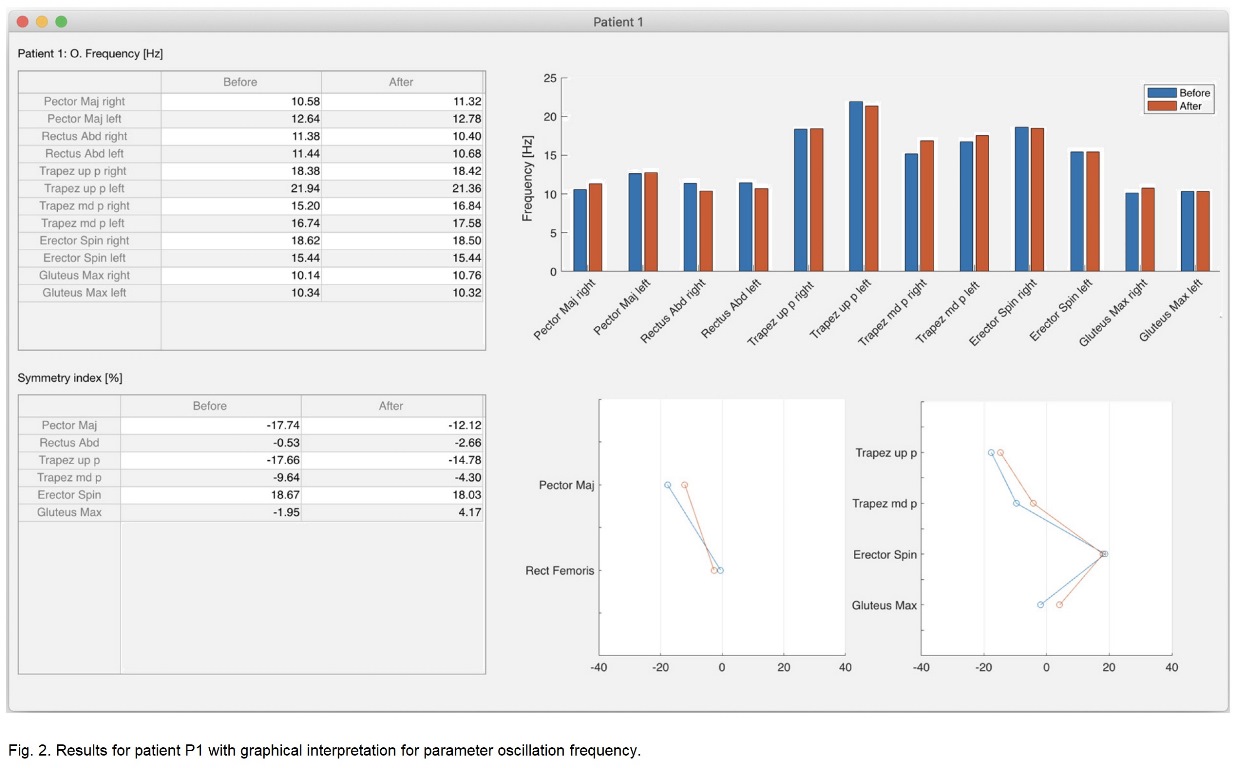Publications

Investigation of Muscle Imbalance: a feasibility study
Authors: Iva Milerska 1, 2, and Lenka Lhotska 2, 3
Affiliations:
- Faculty of Electrical Engineering, Department of Cybernetics, Czech Technical University in Prague, Czech Republic
- The Czech Institute of Informatics, Robotics and Cybernetics, Czech Technical University in Prague, Czech Republic
- Faculty of Biomedical Engineering, Czech Technical University in Prague, Kladno, Czech Republic
Journal: IFMBE Proceedings - December 2020, Volume 80, Pages 733–739 (DOI: 10.1007/978-3-030-64610-3_82)
-
Field & Applications:
- Medical
- Gerontology / Ageing
- Physiotherapy
- Treatment evaluation
- Muscle symmetry
Sedentary occupation and lack of exercise lead to the gradual muscle wasting and thus shortening of the whole body and also the development of muscle imbalance which involves weakening of muscles, shortening of muscles and impaired spine statics and dynamics in a long-term sitting position. Prevention of muscle imbalance should be aimed at eliminating their causes. Myotonometric parameters were measured using MyotonPRO device before and after a physiotherapeutic exercise aimed at strengthening and stretching the deep muscular system. Eight females (age: 56.9 ± 8.4 years) volunteered to participate in this study. Six muscles were selected for measurement on both sides of the body and the symmetry index was calculated. Overall, symmetry improved in 119 cases out of 240. In 55 cases the right-left symmetry changed to left-right or vice versa. A graphical user interface has been designed for better understanding and visualization of results. The physiotherapist can choose an individual proband and compare the results before and after exercise. In the next exercise it can focus on individual muscle parts where the symmetry was not achieved.
Keywords: Symmetry index, Myotonometric parameters, MyotonPRO device, GUI


This study was designed as a feasibility study performed with the aim to answer the question whether this type of measurement can show objectively effect of special rehabilitation exercises focused on deep muscle system that is difficult to measure in general.
The main conclusion is that the values of symmetry and other parameters indicate improvement in a very transparent way.
Our future research will be aimed at longitudinal measurement of the volunteers’ group. For better and easier understanding of the results, a graphical user interface has been designed. The physiotherapist can choose an individual proband and compare the results before and after exercise. Based on the results of symmetry index in the next exercise he/she can focus on individual muscle parts where the symmetry was not achieved. This enables better efficiency of physiotherapy exercises.


